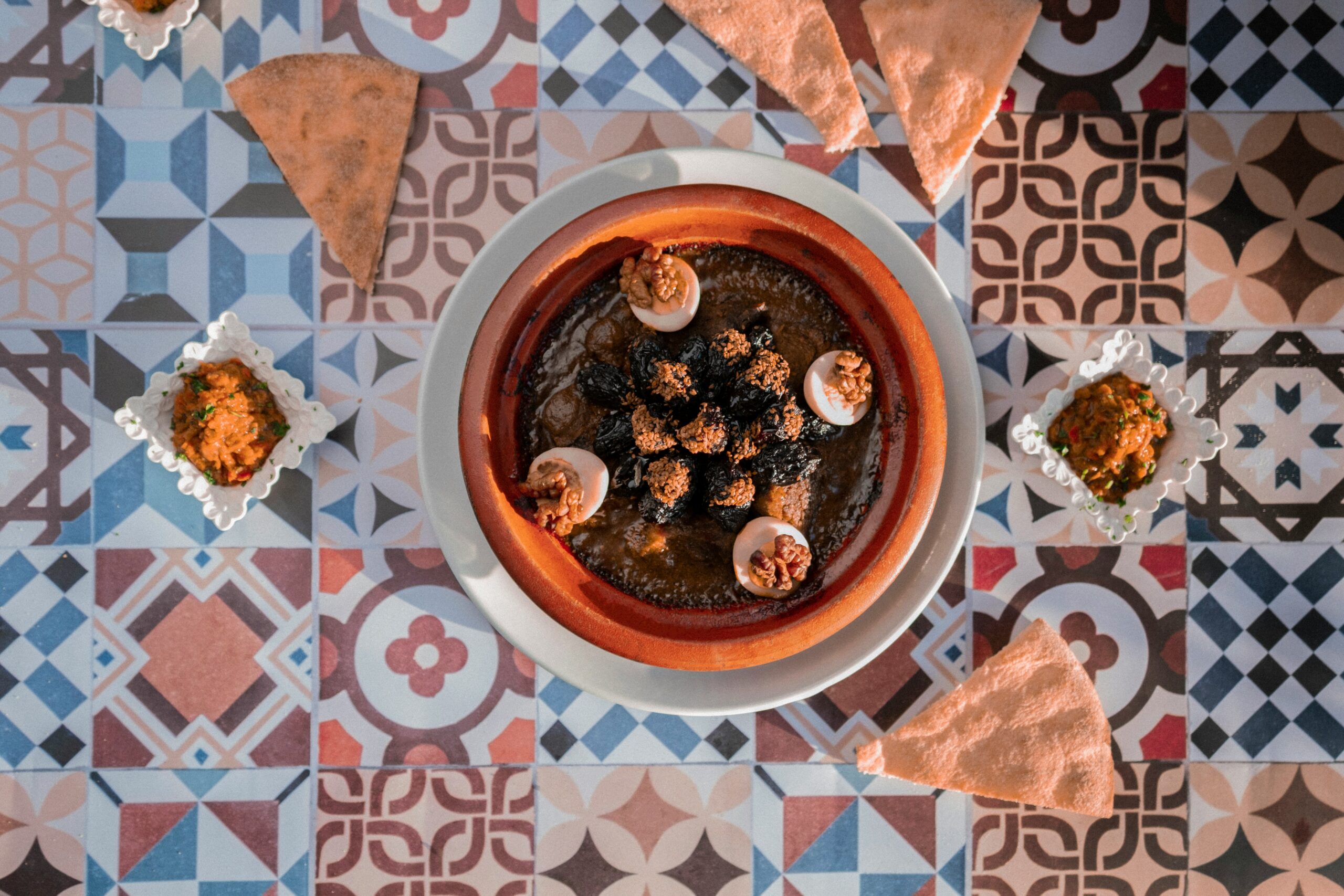
Moroccan gastronomy : A true delicacy !
Moroccan cuisine is renowned worldwide for its delightful blend of unique flavors and ingenious use of aromatic spices. But behind these appetizing dishes lies a rich and fascinating culinary history. For centuries, Moroccan gastronomy has been influenced by various cultures and traditions, creating a unique and diverse cuisine. In this article, we invite you to delve into the history of Moroccan gastronomy and discover the influences that have shaped the iconic dishes we know today.
- Berber origins:
The history of Moroccan cuisine dates back to the pre-Islamic era, when the Berbers, the indigenous inhabitants of Morocco, were the first occupants of the region. Berber cuisine is characterized by the use of local ingredients such as cereals, vegetables, olives, honey, and aromatic herbs. Traditional Berber dishes like couscous and tagine have survived to this day and have become symbols of Moroccan gastronomy.
- Arab and Andalusian influence:
In the 7th century, with the advent of Islam and the Arab Umayyad dynasty, Moroccan cuisine began to enrich itself with new flavors and cooking techniques. Arabs introduced ingredients such as almonds, dates, oranges, and spices, which became essential elements in many Moroccan dishes. Additionally, the influence of Muslim Andalusia brought sophisticated cooking techniques, such as the use of orange blossom water and honey to flavor desserts.
- Jewish and Sephardic heritage:
The presence of the Jewish community in Morocco dates back to antiquity, and their influence on Moroccan gastronomy is significant. Sephardic Jews brought with them unique recipes, including dishes made with spices, minced meat, and stuffed vegetables. Famous examples include spicy meatballs called “kefta” and “pastillas,” flaky pastries filled with chicken or seafood. Jewish flavors harmoniously merged with other culinary influences in Morocco.
- Legacy of colonial empires:
During periods of colonization, Morocco was influenced by European empires, particularly the Portuguese and French. The Portuguese introduced ingredients such as peppers, tomatoes, and potatoes, enriching Moroccan cuisine. The French also left their mark, especially through French cuisine influence. French cooking techniques, such as pastry-making and the use of savory sauces, were adopted and adapted by Moroccan chefs. Thus, dishes like “Bastilla,” a delicious pigeon and almond pie, emerged from this culinary fusion.
- The importance of spices:
One of the most distinctive features of Moroccan gastronomy is its generous use of aromatic spices. Spices such as cumin, turmeric, ginger, paprika, cinnamon, and saffron give Moroccan dishes their characteristic flavors and vibrant colors. The importance of spices in Moroccan cuisine can be attributed to Morocco’s geographic location as a trade crossroads, where spices have been exchanged for centuries.
In conclusion:
Moroccan gastronomy is a true culinary treasure, the result of a rich history and multiple influences. From Berber traditions to Arab, Andalusian, Jewish, and European influences, Moroccan cuisine is a harmonious blend of flavors, ingredients, and cooking techniques. Whether it’s couscous, tagine, pastillas, or delicious desserts made with honey and dried fruits, each Moroccan dish tells a unique story. By exploring the history of Moroccan gastronomy, we gain a better understanding of the significance of cuisine as a cultural expression and can savor these culinary delights with deeper appreciation.
